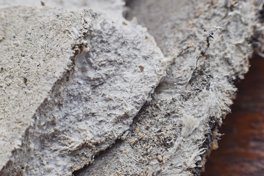
How Long Does an Asbestos Claim Take to Settle?
A compensation claim for an asbestos related disease can take on average up to 18 months to complete, but more complex claims that need more evidence could take as long as 3 years.


Personal Injury & Disease Litigation Solicitor
Work-related lung diseases are lung conditions which could be caused or aggravated by coming into contact with materials, chemicals and/or toxic fumes in the workplace.
The lungs will be affected in different ways, depending upon what substance or material you might have been exposed to. Work-related or occupational lung disease can be caused by the conditions someone might have been exposed to during employment in the past, or indeed a much more recent exposure.
If you feel you might have a work-related lung disease get in touch with our Industrial Disease Solicitors for free legal advice. We may be able to deal with your claim for compensation on a No Win, No Fee basis – ask us for details.



A range of work-related lung conditions can be caused by exposures in the workplace, some far more serious than others. Below is a list of the most significant types:
This may be caused by a range of exposures, such as exposure to asbestos, silica, diesel engine exhaust emissions and mineral oils. Smoking is of course the most common cause of lung cancer and as asbestos-related lung cancer is identical to the more common form of lung cancer, it makes it generally more difficult to ascertain a cause. It is, however, estimated that asbestos-related lung cancer kills the same number of people annually as mesothelioma.
Mesothelioma is a cancer of the lining of the lungs, which is almost certainly caused by exposure to asbestos. It can be caused from only a short period of exposure to asbestos, generally from asbestos fibres in the workplace. The disease usually occurs between 15 and up to 50 years after exposure and commonly affects those working in the shipbuilding industry, builders, pipe laggers, plumbers, electricians and painters. However, it can affect anyone who has come into contact with asbestos fibres, perhaps from asbestos-lagged pipework, asbestos sheeting being cut or perhaps damaged or broken asbestos tiles.
Mesothelioma can also cruelly affect family members. For example, they may have come into contact with the harmful asbestos fibres when the primary person exposed to them comes home with contaminated clothing. This is known as secondary exposure and is becoming a more common cause of mesothelioma in individuals.
COPD is a serious long-term lung disease in which the flow of air into the lungs is gradually reduced by inflammation of the air passages and damage to the lung tissue. Most COPD cases are caused by smoking, but research from the European Lung Foundation suggests that around 15% of cases are partially triggered by substances in the workplace.
A wide range of vapours, dust from coal, cotton or gran, gases and fumes and passive cigarette smoking potentially contribute to causing conditions such as chronic bronchitis and emphysema, or at least making them worse. These conditions generally have a much slower onset and develop years after initial exposure, with symptoms such as shortness of breath and persistent coughing being potential indicators.
This can be defined as adult asthma that is specifically caused or made worse by agents that are present in the workplace. A wide range of substances can cause or exacerbate asthma, such as dust from animals, grains, chemicals in paints and chlorine in swimming pools. Symptoms will generally start shortly after exposure to the offending substance and subside when the individual is away from the workplace.
This is a long-term and irreversible disease characterised by scarring and inflammation of the lung tissue. The main types of pneumoconiosis are defined in terms of their causative agents: coal worker’s pneumoconiosis due to coal dust exposure, asbestosis due to exposure to asbestos fibres, and silicosis due to silica dust exposure.
Like mesothelioma, asbestosis has a long latency period, with similar symptoms emerging many years after initial exposure. Unlike mesothelioma, it isn’t a cancer, but it results in a thickening of the lung tissue, which leads to gradual shortness of breath. However, asbestosis isn't necessarily fatal.
The Pleura is the name given to the lining of the lungs, which, in the case of pleural thickening, becomes inflamed. This leads to swelling and squeezing of the lungs, leading to breathlessness and chest pains. Diffuse pleural thickening isn’t fatal in itself, but is common among people exposed to asbestos, who might be susceptible to another, more serious asbestos conditions.
These are non-malignant diseases of the lung lining caused by asbestos. A diagnosis of pleural plaques doesn’t mean that a more serious disease will develop, although it would be wise to monitor the condition in case a more serious lung condition such as mesothelioma, lung cancer or asbestosis develops. But while scientific evidence suggests that having pleural plaques does increase the risk, if it doesn’t develop into a more serious condition, Courts in England and Wales will no longer award compensation for an individual with pleural plaques alone.
This is an inflammation of the small air sacs within the lungs due to an allergic reaction to metal working fluids, mould in grain or wood, or certain organic materials.
Sometimes known as ‘Monday Fever’, byssinosis is an asthma-like disease which causes the air passages to become constricted in reaction to exposure to cotton dust in poorly ventilated working environments. Yarn and fabric manufacturing workers will be most at risk from this condition.
Conditions such as Q-Fever and Legionnaires Disease can be caused by a bacterium generally found in farm animals. Signs and symptoms of both diseases include coughing, shortness of breath, high fever, muscle pains, and headaches. Nausea, vomiting, and diarrhoea may also occur. The legionella bacterium is found naturally in fresh water and it can thrive in hot water tanks, hot tubs, and cooling towers of large air conditioners. It’s usually spread by breathing in mist that contains the bacteria and is often spread by air conditioning systems.

A compensation claim for an asbestos related disease can take on average up to 18 months to complete, but more complex claims that need more evidence could take as long as 3 years.

You may be eligible for Industrial Injuries Disablement Benefit (IIDB) if you become ill or disabled because of a work related disease. The amount you could receive will be determined by your individual circumstances, such as the severity of your illness.

If a loved one has died from a work related illness or industrial disease, you have 3 years from the date of their death in which to make a claim for compensation, provided they died within 3 years of being diagnosed with a work related illness or disease.
Fill in the form below to get in touch with one of our dedicated team members, or call our team today on: 0808 239 0144